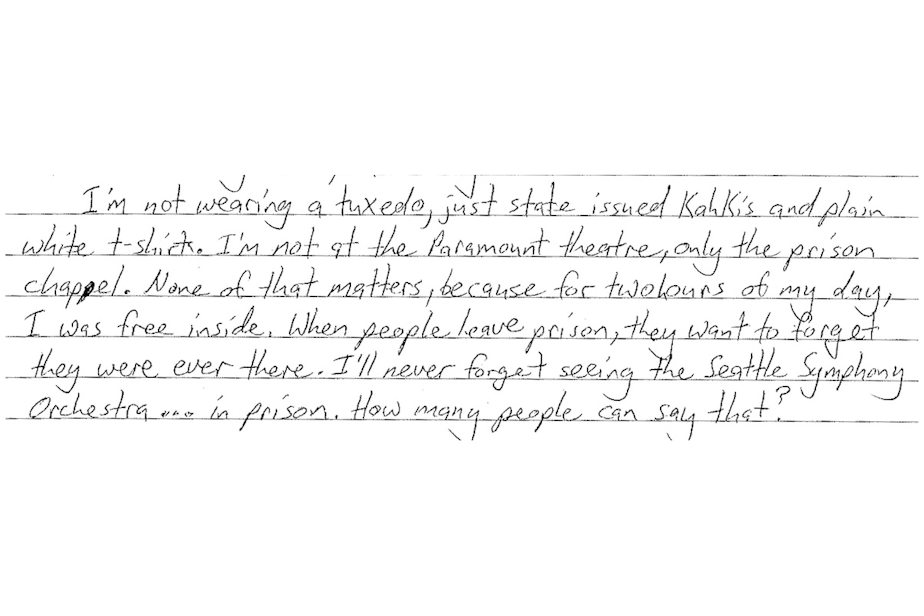VIDEO: Seattle Symphony musicians play at Monroe prison
On a drizzly late November afternoon, three musicians unpack their instruments and pull out sheet music for a string trio by the late Russian composer Alfred Schnittke. They’re rehearsing for a concert later that day.
Cellist Joy Payton dives into the score first, then violist Sue Jane Bryant begins to play. Violinist Steve Bryant, stops them.
“You’re too loud,” he tells Payton. Her cello is obscuring Sue Jane Bryant’s part. The three discuss the complex music then take up their bows again and begin to play.
Steve Bryant and Payton perform together regularly as members of the Seattle Symphony Orchestra. Sue Jane Bryant is Steve’s wife.
Many orchestra members moonlight, but today’s gig is unusual: The trio will perform for about 50 inmates at the Washington State Reformatory in Monroe.
The reformatory is one of five units at the Monroe Correctional Complex. It houses violent offenders who are serving long-term sentences for crimes such as armed robbery, sexual assault and child rape. This is definitely not the kind of audience the Seattle Symphony usually entertains at Benaroya Hall.
Steve Bryant has been performing for inmates for the past 16 years. He credits former Seattle Symphony education and outreach leader Nancy Gosen.
“She asked me to put something together,” Bryant says. “We brought some beginner instruments and gave lessons.”
The second time, SSO sent a string quartet that included Bryant. “It was cold,” he remembers, “and there was so much demand that they had to put us in the gym with no heat.”
They played everything from composer Dmitri Shostakovich to Jimi Hendrix’ “Purple Haze.”
“I remember being surrounded by all these big guys wanting to shake my hand,” Bryant says.
The Seattle Symphony isn’t the only local arts organization with an organized prison outreach program. Writers, theater and dance companies all do regular work with incarcerated people. Researchers have found that exposure to the arts has a beneficial effects on recidivism rates, the inmates’ ability to control their emotions, and their communication skills.
At 2:30 p.m. sharp, dozens of men in khaki pants and work shirts file into the chapel, where the concert will take place. They rush to the front row to find the best seats.
“As soon as you sit down, you feel a calm and relaxation,” says Justin Countryman. He’s been incarcerated for four years, about halfway through his sentence.

He and his fellow audience members sit rapt throughout the 45-minute concert. Many smile or sway in time to the music, even to the dissonant Schnittke composition.
“That Russian composer, I sensed his anger. It was so emotional,” says Jacob Bodner. “If I wasn’t in prison I might have let a tear go.”
Steve Bryant shares Bodner’s reaction to the music. But for him, the prison performances offer an opportunity to focus on something other than his own career.
“It feels so satisfying helping other humans. We go for the greatest music we can lay hands on and try to play it really, really well," he says.





